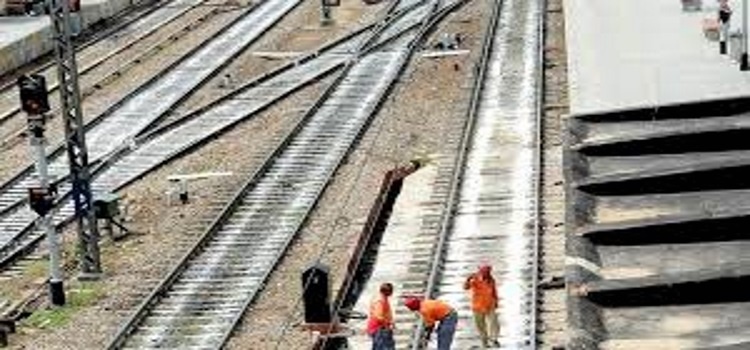
Railway Minister Piyush Goyal deserves praise for allocating over Rs 1.48 lakh-crore for capital investment in the Union budget. This is a substantial increase from last year’s allocation.
Track safety is of prime importance, and controlling track, rail and weld failures pose a serious challenge. In the first nine months of the fiscal year 2017, there were 3,006 failures — an increase from 2,404 in same period last year. At close to 10 failures per day, it’s an alarming rate; because each is a potential accident. The budget makes efforts to address these failures by hiking the allocation of track renewals from Rs 9,305 crore in Revised Estimates (RE) 2017 to Rs 11,450 crore in Budget Estimates (BE) 2018. The underlying belief is that the renewal of overaged tracks will reduce such failures.
Without challenging this premise, it needs to be analysed why rails in India crack so much in comparison to other countries.
First, the use of technology for crack detection without engaging trackmen needs to be used much more. This is because manual detection is not entirely foolproof, especially at night. A recent pilot project in the North Central Railway is a welcome move.
Second, it is all about improving the railways’ financials. The capacity utilisation in sections that really matter is already above 100%, leading to delays in running trains, denial of maintenance blocks and difficulty in introducing new trains.
The railways proposes to induct high-speed rolling stock, but this may not be a solution. It would be like driving a new BMW through the packed streets of Chandni Chowk in old Delhi. The answer lies in increasing the average speed of freight trains which is hovering around 23.1 km/hr. The technical advancements so far have primarily concentrated on longer and heavier freight trains rather than faster ones.
The simplest way to make freight trains faster is by focusing on the horsepower (HP) to trailing load (TL) ratio. Using remote radio controls for multiple locomotives will also help. Thus, the time for a technology push is overdue.
Third, the fog during winter plays havoc with train operations. Fog-safe devices now being used have their limitations as they indicate the signal location and not the signal aspect — yellow, red or green. Loco pilots need to slow down for checking this. Cab signalling can solve this problem. This technology is quite common in Europe and Japan, and can be adopted in at least one zone, the North Central Railway, where fog delays are rampant during winter.
Fourth, any Indian who has travelled in a train abroad will lament the poor condition and facilities in Indian trains. Efforts made so far by the railways have got mired in specifications and vendor selection, thereby missing the larger picture. The easier way is to have a government-to-government partnership on the pattern of India-Japan rail cooperation for the dedicated freight corridor or the high speed train project. The funding requirement is also not much and a small beginning, of placing an order of 1,000 coaches, can be made initially. This strategy will deliver coach interiors with international benchmarking with a strong potential for Make in India eventually.
